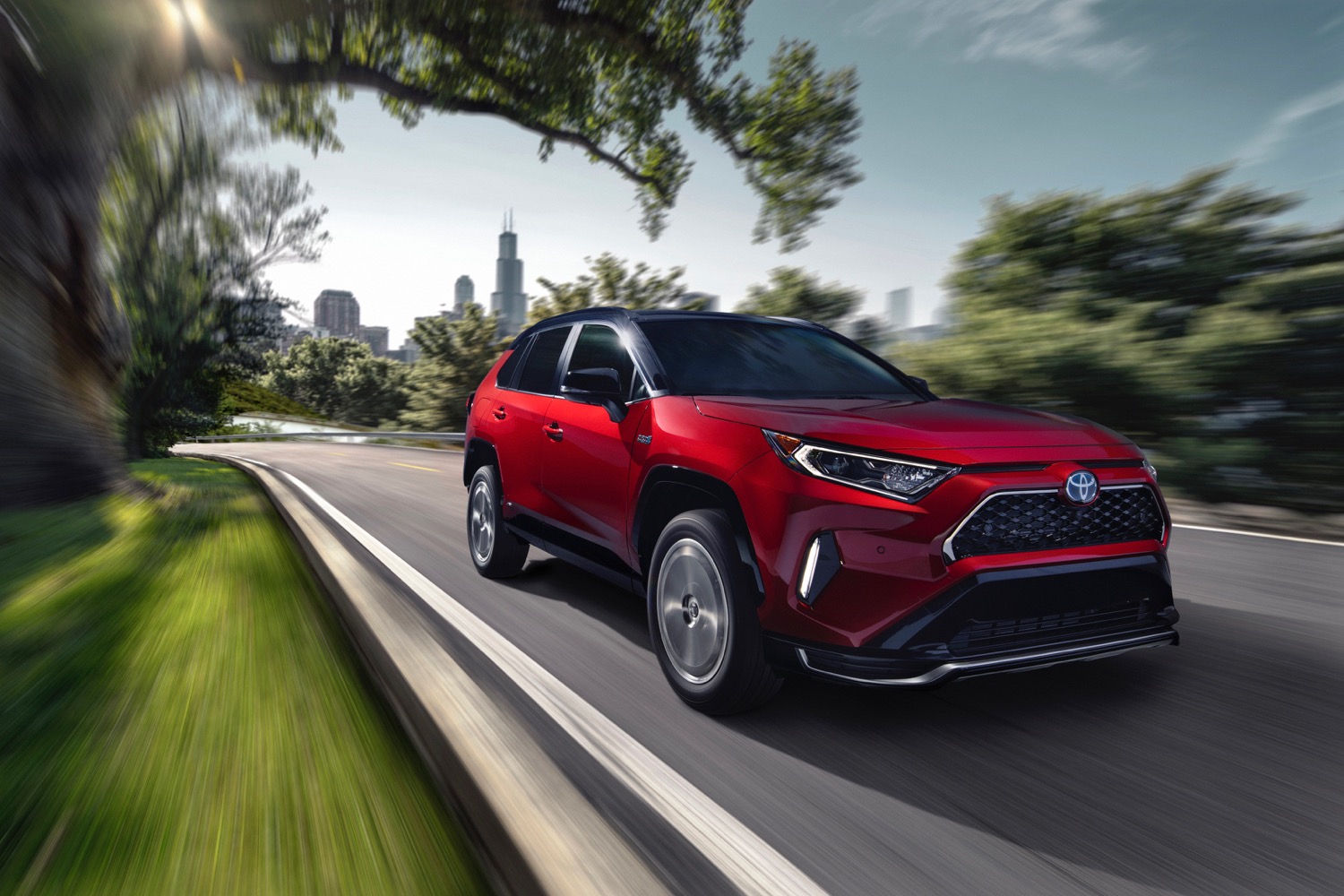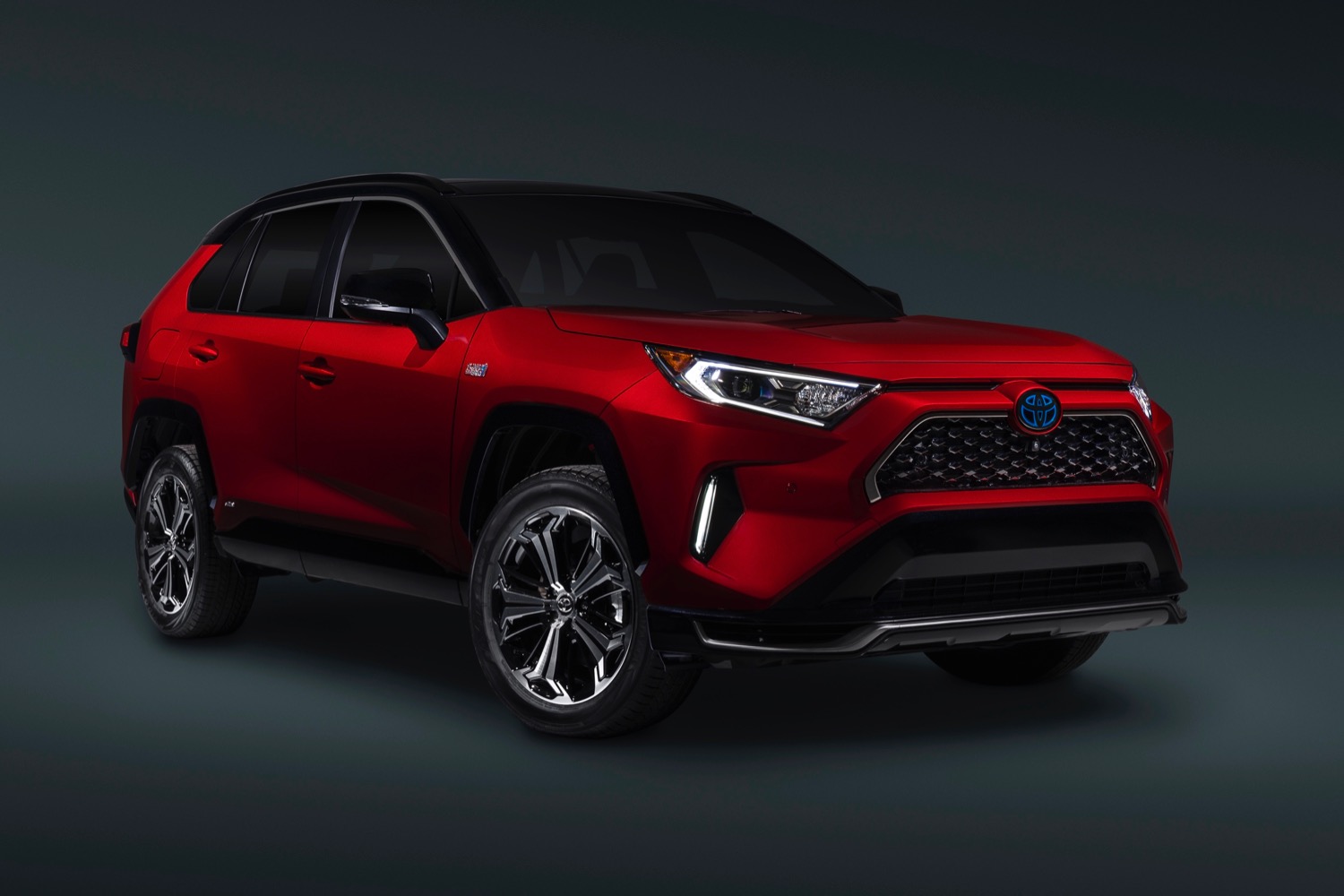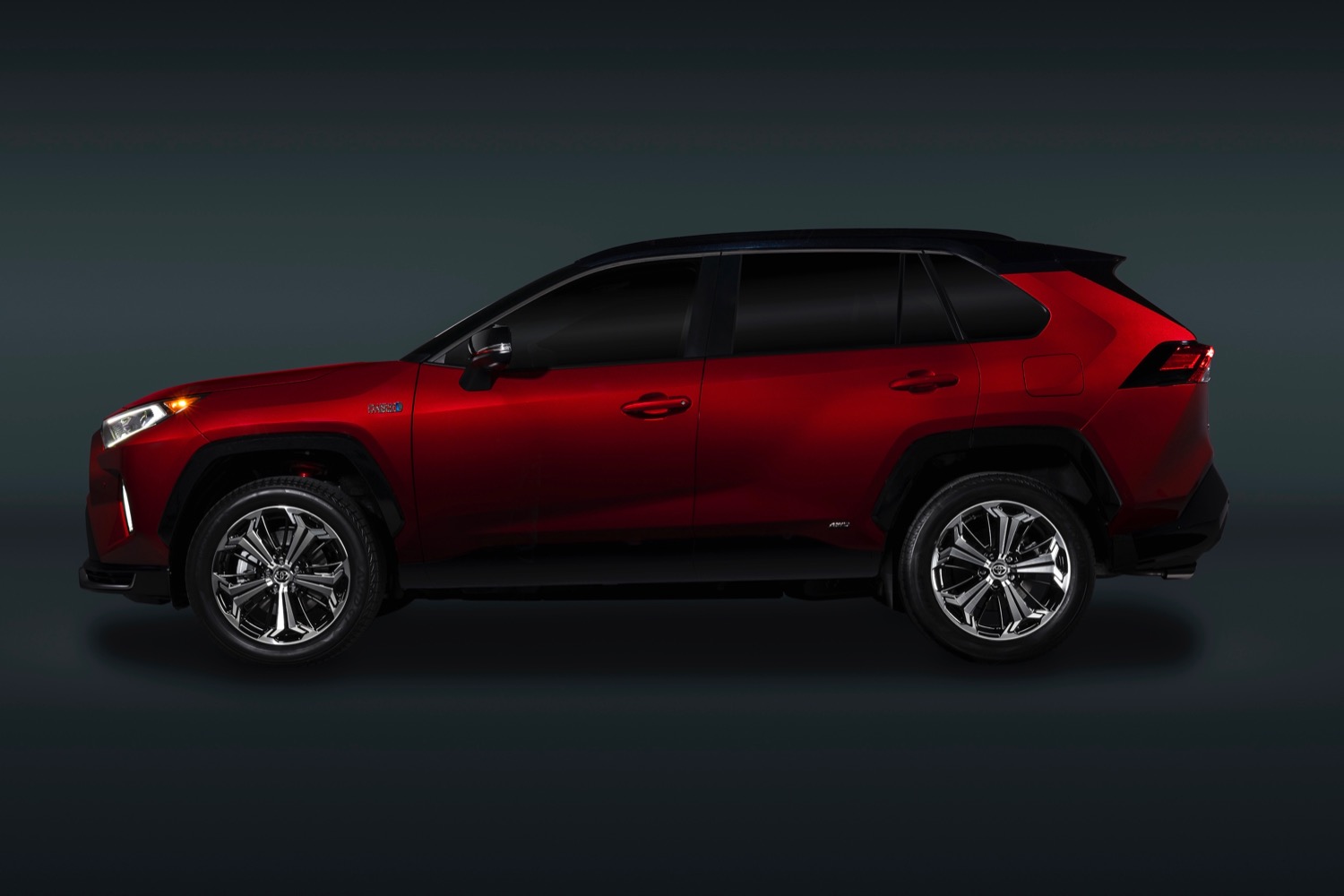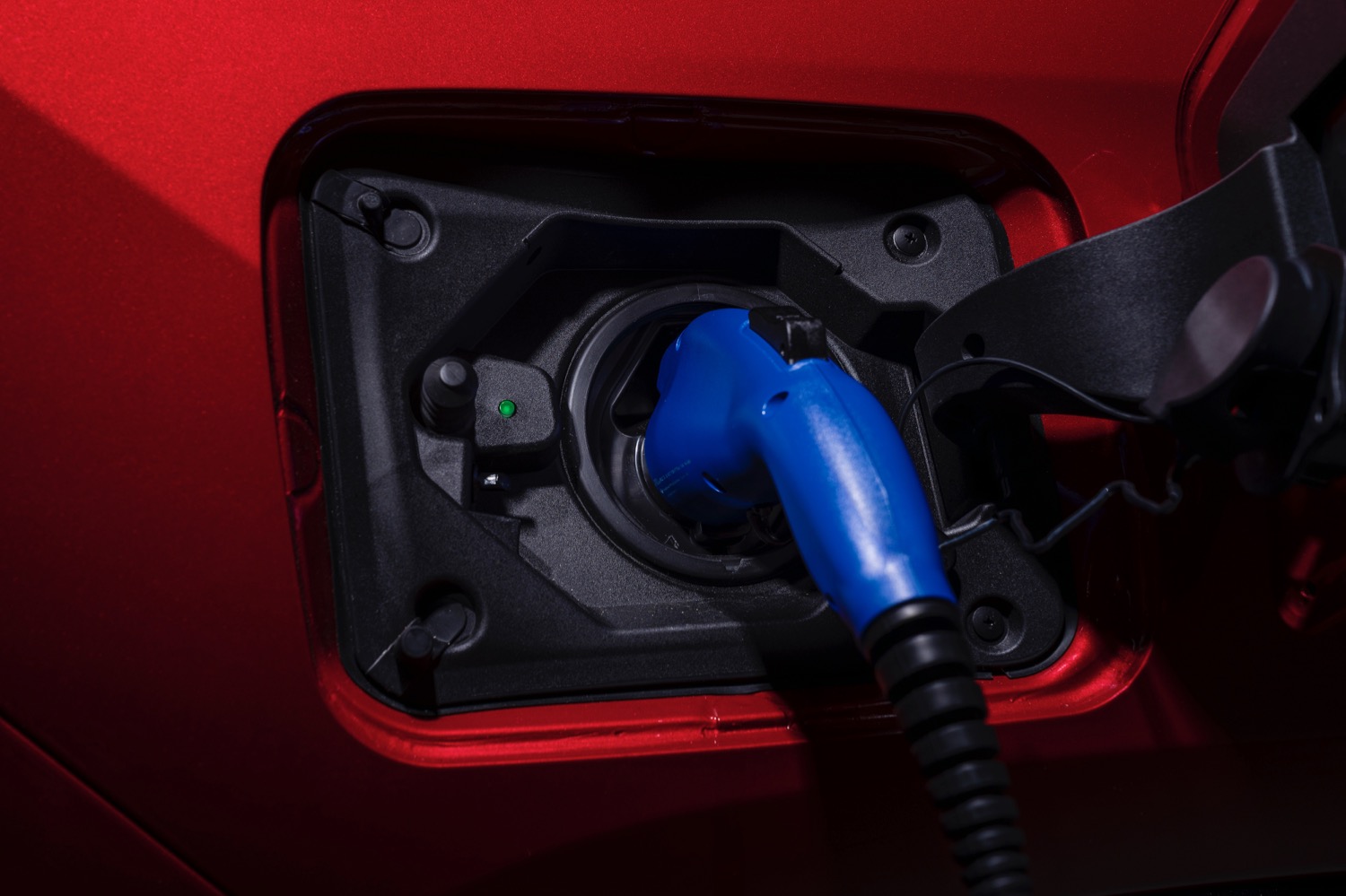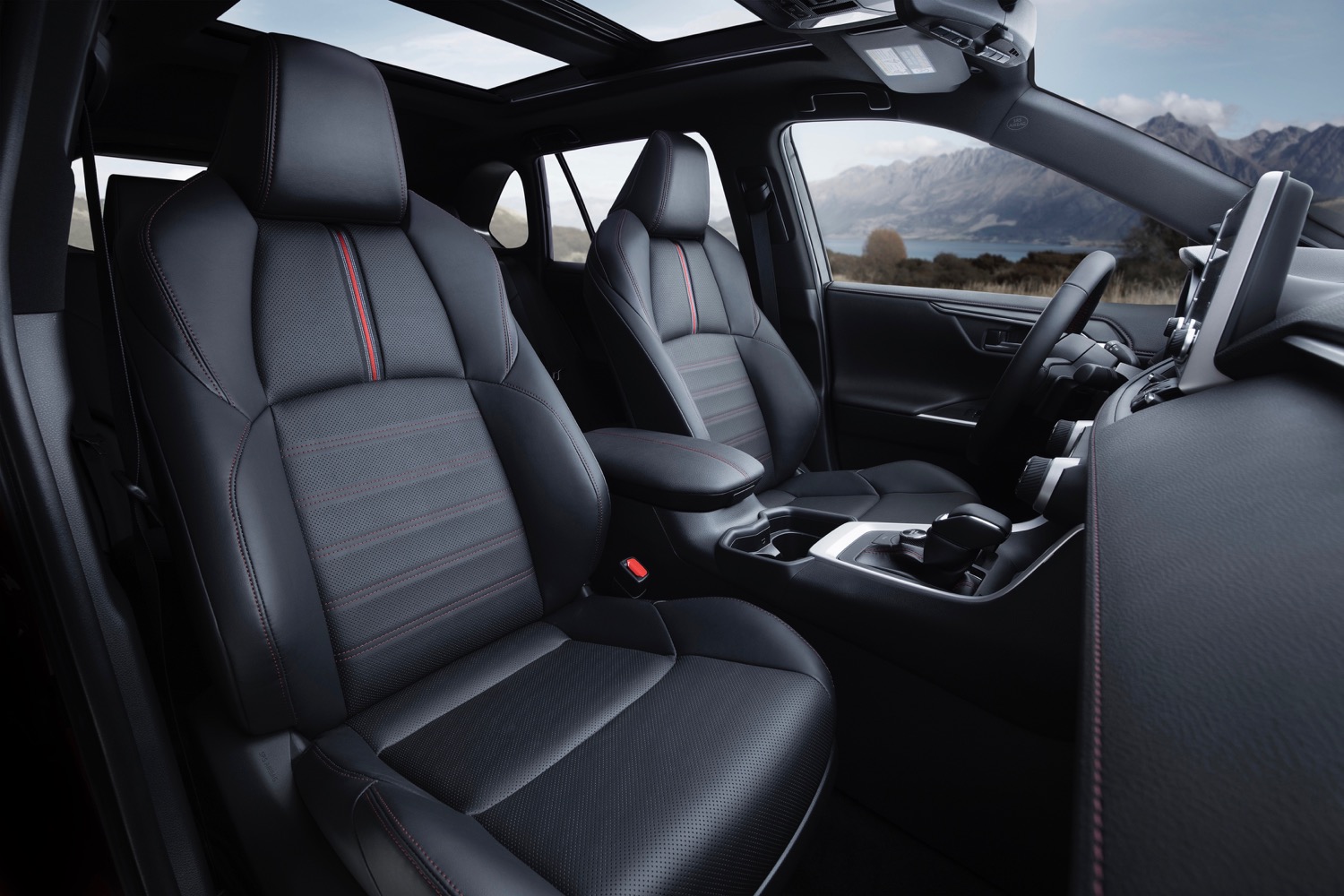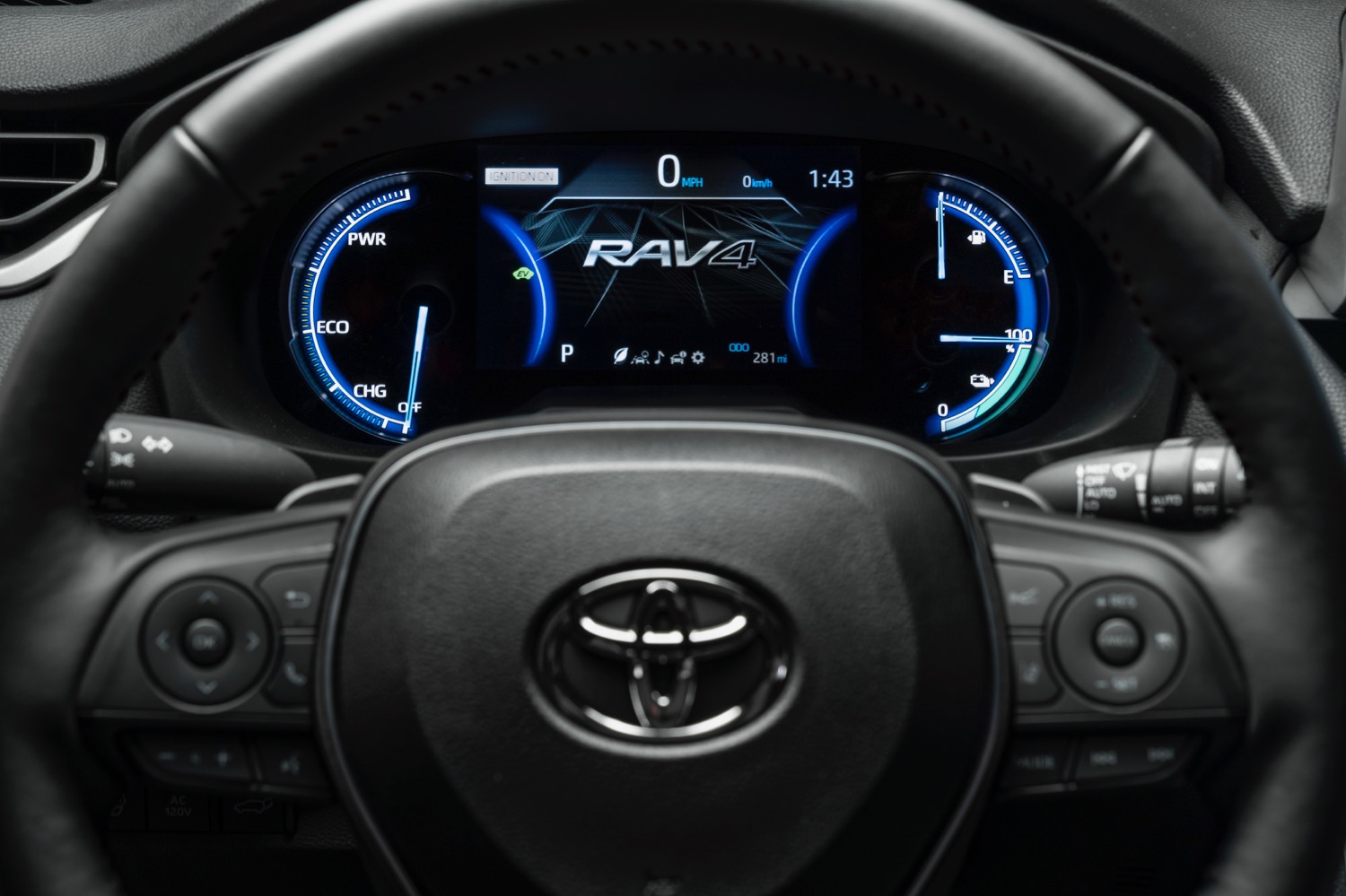About a month after it was first announced, the 2021 Toyota RAV4 Prime plug-in hybrid is making its public debut at the 2019 Los Angeles Auto Show. Toyota claims the Prime will not only be more fuel efficient than other RAV4 variants, but quicker and more powerful as well. How could you argue with that?
As with the Prius Prime, Toyota used the “Prime” name to signify this RAV4’s plug-in hybrid powertrain. Toyota already offers a RAV4 Hybrid model without a plug, but adding one allowed engineers to fit a bigger battery pack. That provides more electricity storage capacity, giving the RAV4 Prime limited all-electric driving capability (up to 39 miles, according to Toyota).
The RAV4 Prime uses the same 2.5-liter Atkinson-cycle four-cylinder engine as the RAV4 Hybrid, but with different tuning and an upgraded hybrid system. The result is a total system output of 302 horsepower — 83 hp more than the RAV4 Hybrid. Toyota claims the RAV4 Prime will do zero to 60 mph in 5.8 seconds. That’s pretty quick for a crossover with no real performance DNA, as well as 2.0 seconds quicker than the RAV4 Hybrid.
The Prime uses the same all-wheel drive system as the RAV4 Hybrid. A separate electric motor powers the rear axle, with no physical connection to the front wheels. Toyota also included an off-road mode that can increase traction by braking a spinning wheel and shunting power to the opposite wheel. But if off-roading is really your thing, buy a 4Runner. On pavement, the RAV4 Prime driver can use paddled shifters to adjust the level of regenerative braking, a feature already available in vehicles like the Mitsubishi Outlander PHEV.
Gasoline and hybrid versions of the RAV4 are available in myriad trim levels, but Toyota limited RAV4 Prime choices to two — SE and XSE. The base SE comes standard with a 7-inch touchscreen, as well as Apple CarPlay, Android Auto, and Amazon Alexa compatibility. The XSE adds the paddle shifters, wireless phone charging, a 9-inch touchscreen, and synthetic leather upholstery. Toyota hasn’t released pricing for either trim level, however.
The RAV4 Prime gets the same Toyota Safety Sense bundle of driver aids as other RAV4 variants. Adaptive cruise control, lane departure warning, and automatic high beams are all standard, as is a feature that recognizes road signs. The Premium Package for the XSE trim level adds front and rear park assists and reverse autonomous emergency braking. The RAV4 Prime is also covered under Toyota’s new battery warranty, which lasts 10 years or 150,000 miles, whichever comes first.
When it goes on sale in Summer 2020, the RAV4 Prime will compete against the Mitsubishi Outlander PHEV and a plug-in hybrid version of the recently-redesigned Ford Escape. The Ford will use a version of the powertrain from the Lincoln Corsair Grand Touring (which also debuts in L.A.) but without all-wheel drive.

